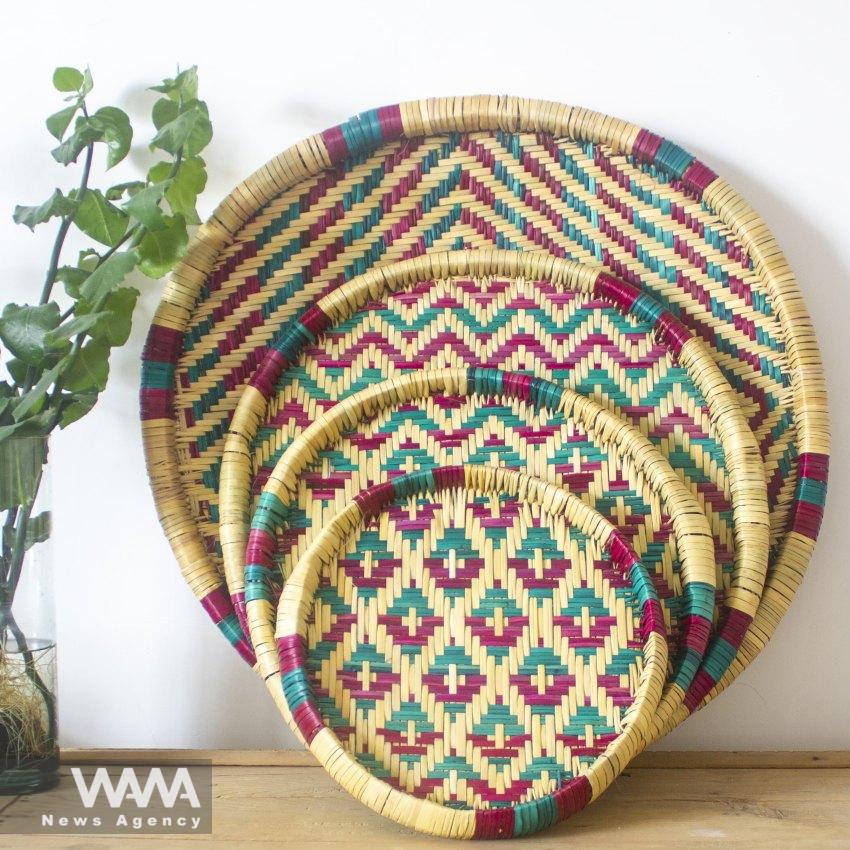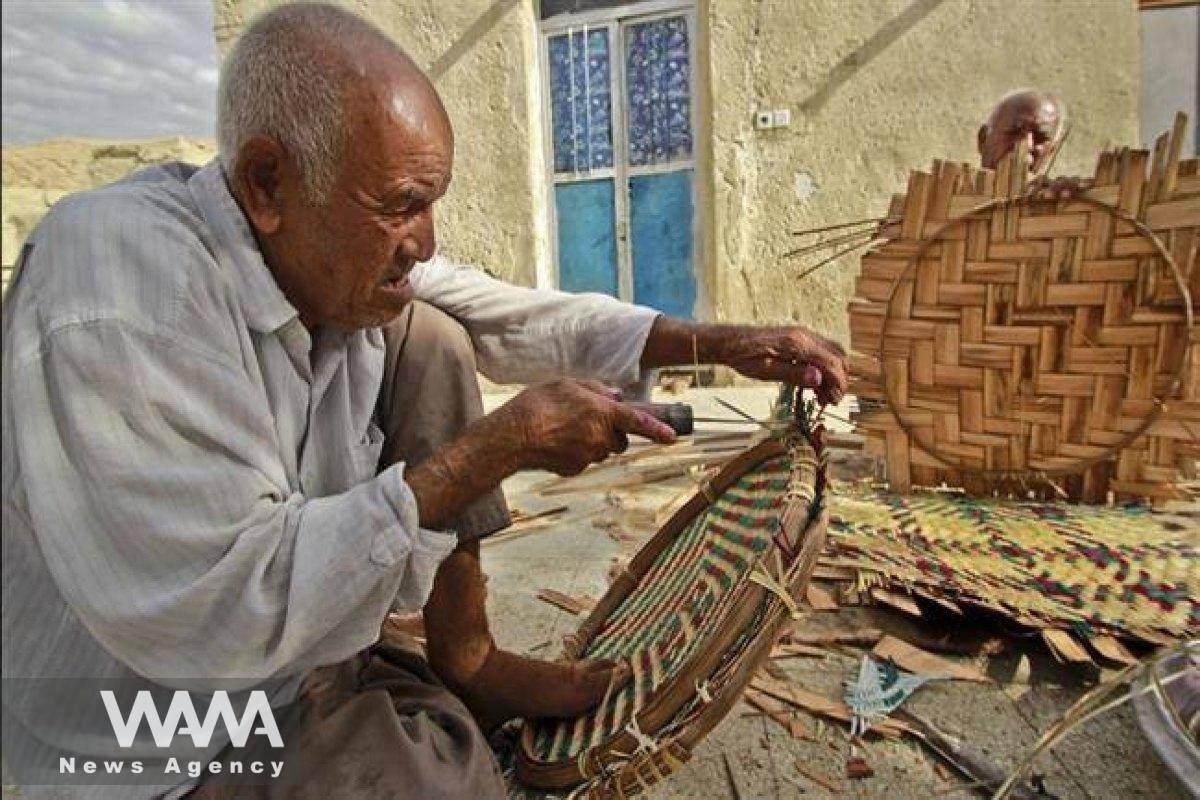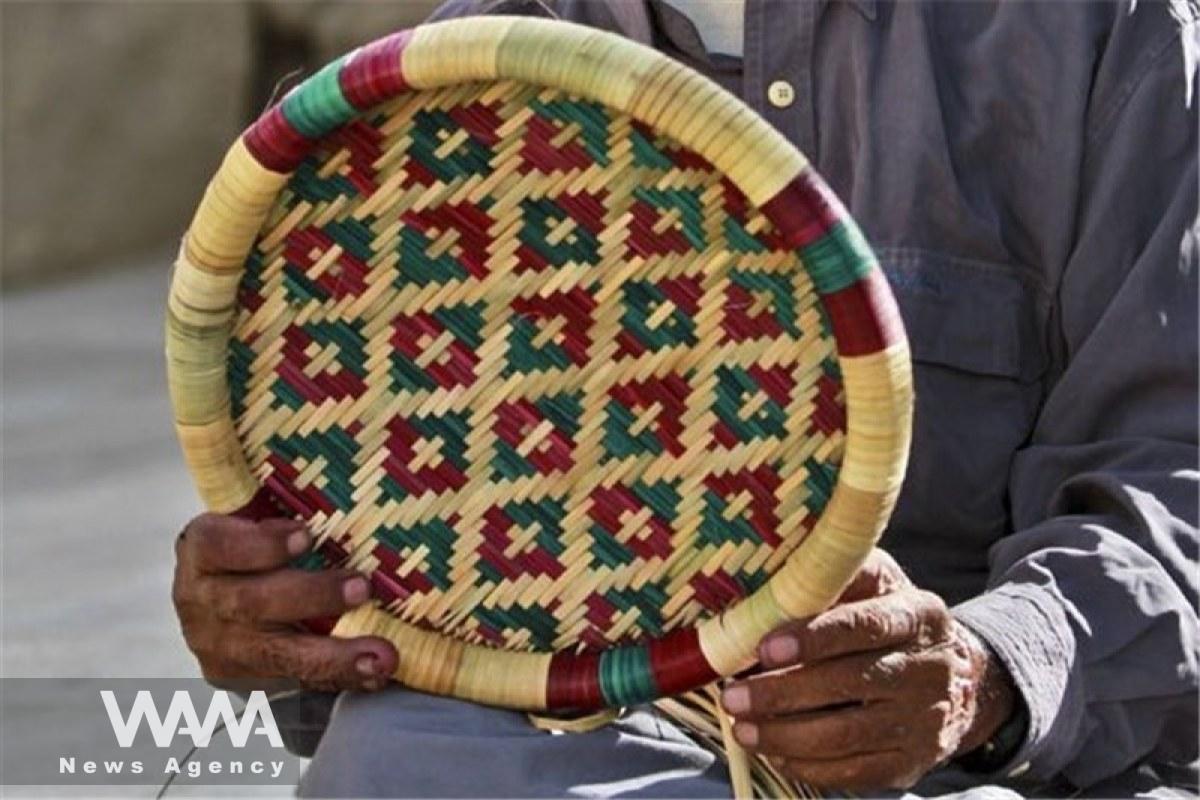Sop Bafi: The Vanishing Art of Lari Handicrafts
WANA (Dec 29) – “Sop Bafi” is a traditional handicraft of the Lari people, created from palm tree derivatives. Today, only two elderly couples continue to practice this craft.
The palm tree is not just about dates; wherever this blessed tree grows, it provides numerous products for the local community—from its sap and fruit to its leaves.
In a village called “Chah Nahr” in the Laristan region of Fars Province, a unique type of handicraft is produced from palm tree derivatives, known as “Sop Bafi.” Currently, this craft is only made by two elderly couples. If they pass away, there will be no one to weave “Sop” with the same expertise.

Sop Bafi A Traditional Handicraft of the Lari People. Social Media / WANA News Agency
A “Sop” is a type of woven tray crafted by southern artisans using date palm clusters, “Darpang” (the thick part of the date cluster), and thin, cut reeds known as “Khong.” The name “Sop” comes from its traditional use in sifting impurities from grains, rice, or legumes—a process called “Sop Zadan” in local terms.
In “Sop Bafi,” the leaves of the palm tree are used, along with a small amount of reeds. These reeds are cut and then dyed in red and green before being incorporated into the design. “Sop” is produced in small, medium, and large sizes.
This woven tray is also used for storing freshly baked bread, as its material and texture allow the steam from warm bread to dissipate quickly. The colors used in the design—green, blue, and magenta—form patterns known as “Kheiki,” “Gol Patooyi,” “Hameh Gol,” and “Tak Gol.”

“Sop Bafi,” is a craft that requires collaboration between men and women. Women typically weave the top surface, while men handle the harder tasks. Social Media / WANA News Agency
In Chah Nahr village, only two elderly couples remain who practice “Sop Bafi,” as it is a craft that requires collaboration between men and women. Women typically weave the top surface, while men handle the harder tasks, such as weaving the base and the edges, which require more strength. For this reason, the craft is often a shared effort between husband and wife.
Recently, young people have started visiting this village to learn the craft and revive this nearly forgotten art. Additionally, new uses for “Sop” have been introduced, such as converting it into coffee tables or lampshades.

A “Sop” is a type of woven tray crafted by southern artisans using date palm clusters, “Darpang” (the thick part of the date cluster), and thin, cut reeds known as “Khong.” Social Media / WANA News Agency
“Sop Bafi” was once practiced in Bushehr and also in Minab and its surrounding villages. However, the “Sop” woven by the people of Chah Nahr is sturdier and capable of carrying heavy objects, unlike the more delicate “Sop Gorzi” from Minab, which resembles “Kapu Bafi.”
This craft has been nationally registered and has also received a seal of authenticity. The head of Laristan’s Cultural Heritage Department stated that the handmade “Sop” of Laristan has been sent to UNESCO for recognition. This handicraft has successfully earned the National Seal of Quality in the name of Laristan.












